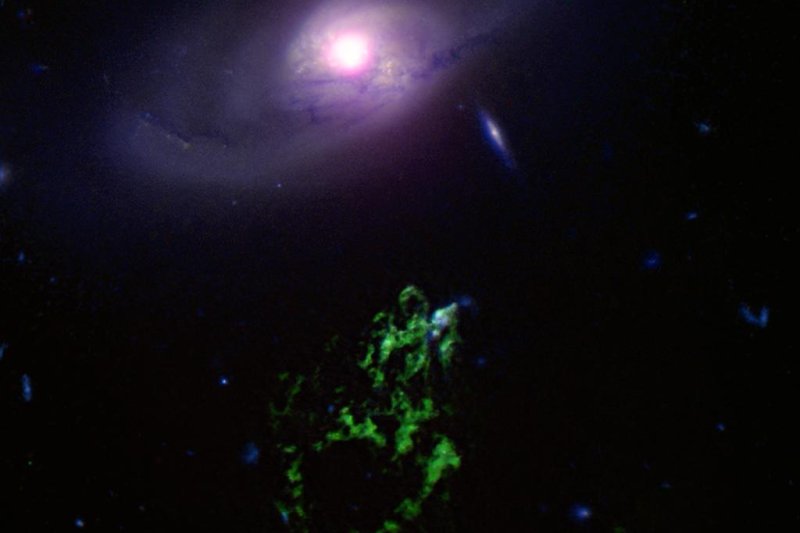BALTIMORE, Aug. 10 (UPI) -- Two structures in a faraway galaxy, a cosmic blob and a gas bubble, are helping scientists understand the history of a supermassive black hole. It's an exercise in detective work researchers hope could be used to probe the evolution of other black holes.
The Green Blob was discovered in 2003 by Hanny van Arkel, who was then a teacher participating in a citizen science project called Galaxy Zoo. The blob is sometimes referred to as "Hanny's Voorwerp," Dutch for "Hanny's object." It's located 200,000 light-years away in a galaxy called IC 2497.















